After months of waiting here is the Ferrari 499P, a very important car for Ferrari as it marks the return to the FIA World Endurance Championship (WEC), in the LMH (Le Mans Hypercar) category. It will compete with Toyota, Glickenhaus, Peugeot, Porsche and Cadillac in 2023, and Lamborghini in 2024!
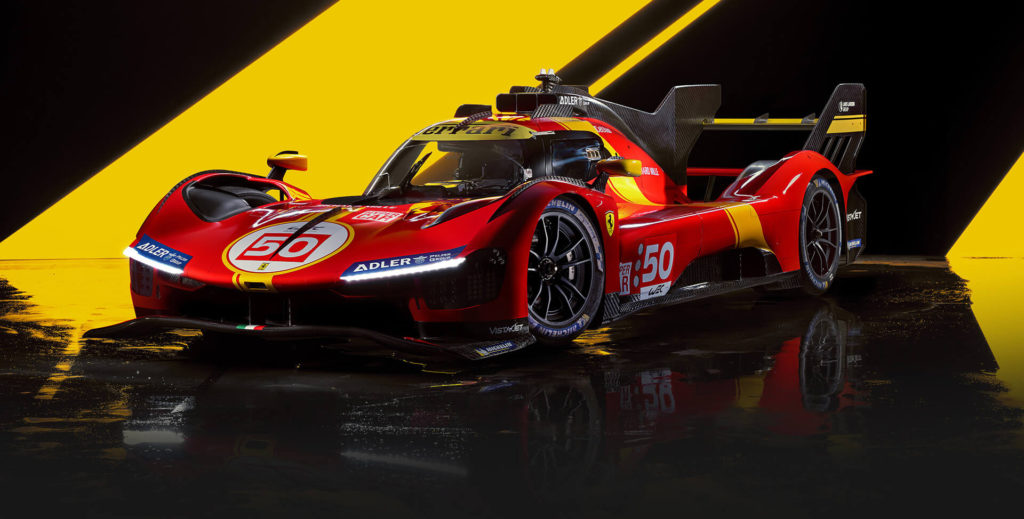
The last time Ferrari won at Le Mans with its own team was in 1964, and the last time it won with a private team was in 1965. The last time Ferrari won the Endurace was in 1972 with the 312 PB. So the return of Ferrari, almost 50 years later, with its own team, and in the Hypercar category is an important event in automotive history.
Thus, the Ferrari 499P was born. 499 for the capacity of one cylinder of the engine (499 cm3 x 6 cylinders), P for prototype.
Made with a carbon fiber monocoque, the 499P's aerodynamics have been pushed to the extreme thanks to hard work in the wind tunnel. Its paintwork is reminiscent of the Ferrari 312PB raced in 1972 and 1973 for Jacky Ickx.
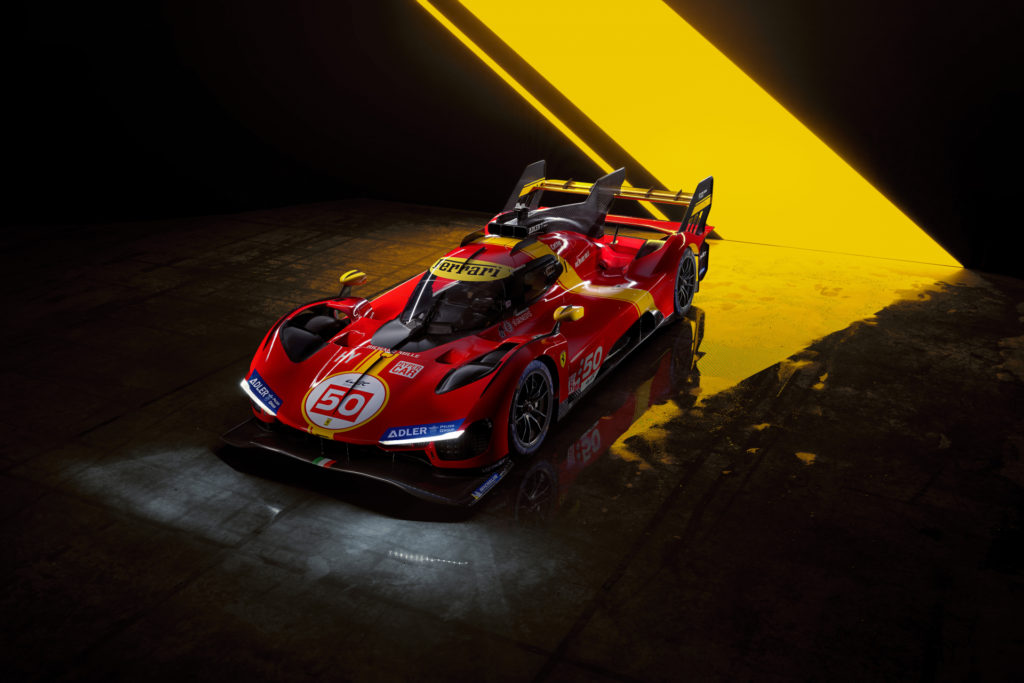
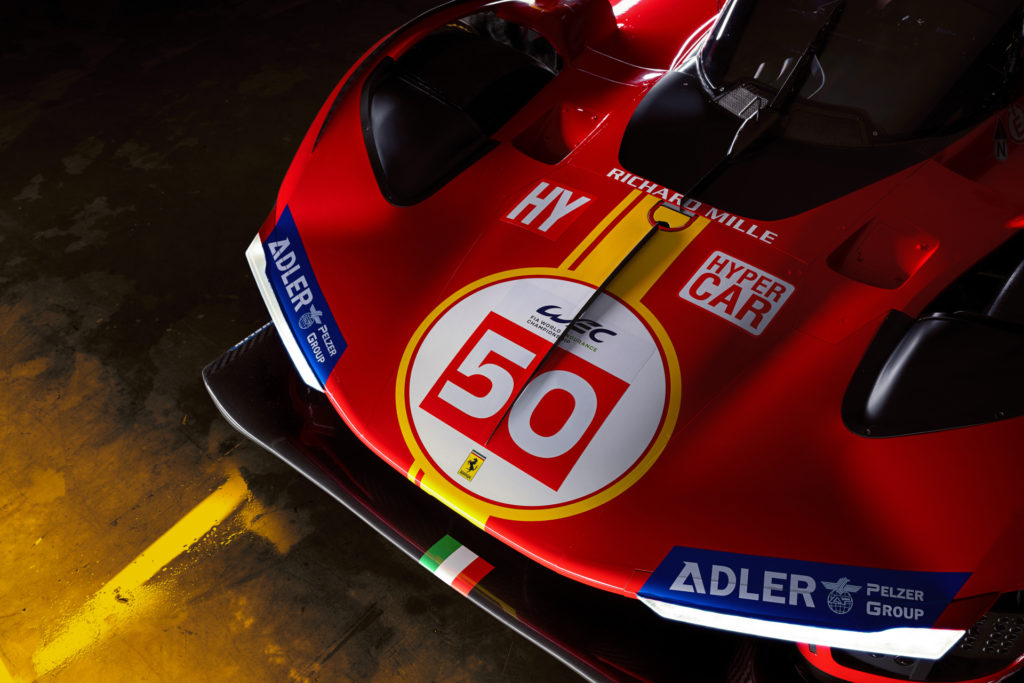
The engine is a twin-turbo 3.0L V6, which is based on the architecture of the 296 GTB, and develops 500 kw (680 hp) of which 200 kw (272 hp) is electric (900V battery). Thanks to the combination of the combustion and electric motors, it will be able to alternate between rear-wheel drive and four-wheel drive depending on the circumstances. The gearbox is a 7-speed.
Ferrari could have gone for a V8 or V10 but, in addition to the evolution of the road car range (with the 296 GTB and GTS), the V6 is small, light and very compact: this gives an advantage for the layout, weight distribution and center of gravity. Ferrari assures that this engine is unprecedented compared to the V6 of the 296 GTB because the rigidity and power required for endurance are not the same as for a road car.
Ferrari announced that it has already completed more than 12,000 km of driving on the circuits of Fiorano, Barcelona, Mugello, Imola and Monza.
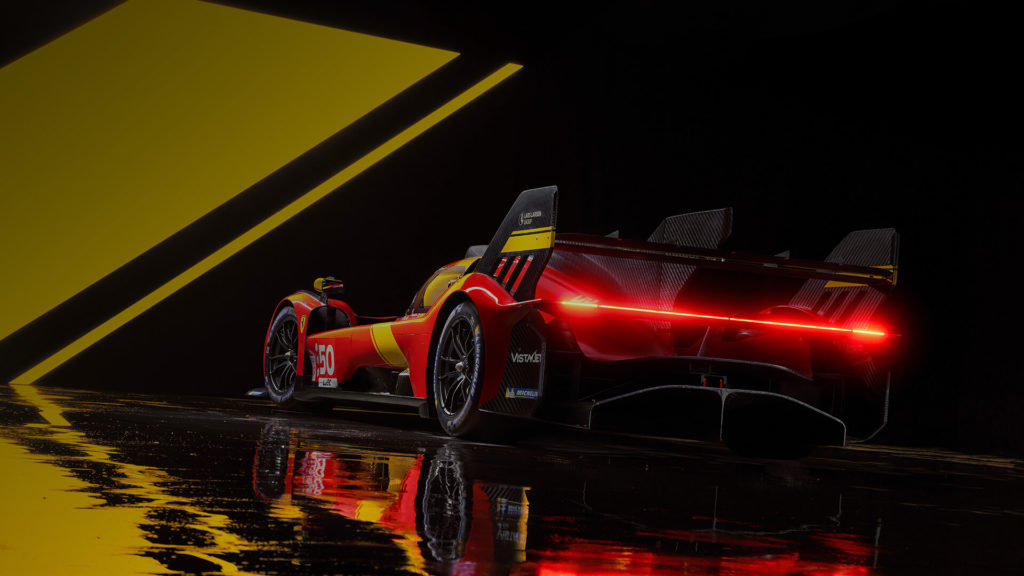
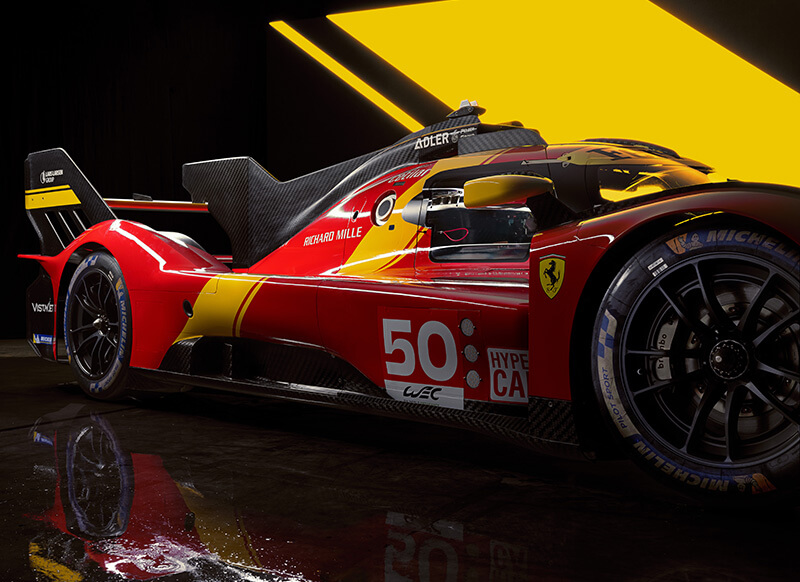
The Ferrari 499P will make its racing debut in March 2023 at the 1000 miles of Sebring in the USA, and then at the 24 hours of Le Mans in June 2023. For the moment Ferrari has not communicated on the drivers.
As a reminder, Ferrari has 20 world endurance titles and 9 victories in the overall classification of the 24 Hours of Le Mans.
I can see it being a cut above all its competitors, which will further enhance Ferrari's mythical record in endurance racing.
Extraordinary car. Beware that it will compete in its category (LMH) with Toyota, Glickenhaus and Peugeot. For Porsche, Cadillac, BMW, Lamborghini and Alpine, it will be in LMDh (free design of the chassis and displacement, against customer chassis and standard hybrid system required for others).
Thank you for this clarification! What is the interest for a manufacturer to choose one solution rather than the other? Porsche and Lamborghini can mutualize components for example?
If I remember correctly, being in the LMDh class allows brands to have access to the American championship (IMSA). LMH can only race in WEC. In terms of design, Porsche and Lambo do not even have the same chassis manufacturer, in fact it is Ligier for Lamborghini and Multimatic (I do not know) for Porsche. However, they will have their own engine (Porsche and Lamborghini, both V8 bi-turbo). It's clearly going to be something to watch!
Question of cost (we passed from the simple to the double), of structure (it is necessary to have a whole department which is access only for that), and of rule because the LMDH are also made to run in the IMSA category what was not the case for the LMH which they were categorized only in WEC. But as the rules have just changed, all this little world will be able to drive in both categories (hence the arrival of McLaren for 2024).
The objective of this regulation is to create a category allowing competition between the two platforms LMH and LMDh. Teams will then be able to compete in WEC and IMSA with the same car.
The LMDhs will be based on one of the four chassis accepted in LMP2 (Oreca, Ligier Automotive, Dallara or Multimatic). Competitors will equip them with an engine of their choice, as well as a standard hybrid system. Bodywork will be able to more easily use the graphic codes of the production vehicles of the brand they are defending.
In order to guarantee the competitiveness of all cars, the ACO and the FIA have defined, among others, the following principles
Minimum weight: 1,030 kg ;
Average total power of the powertrain: 500 kW (680 hp).
The publication of the draft regulations (May 2020) requires a standard 37.3 kW (50 hp) hybrid system.
Porsche and Lamborghini to have the same engine if they wish but will have to have a hybrid system and a chassis provided by external suppliers necessarily, what Ferrari, McLaren, Peugeot or Glikenhaus to name only them refuse. This explains this:
Possibility to race in WEC and IMSA with the same car
In order to attract more manufacturers who have been increasingly scarce in recent years, the LMH and LMDh are not only less expensive to produce than the LMP1s of the time, but they can also be entered in both the WEC (World Endurance Championship) and IMSA (International Motor Sports Association) in North America.
One and the same car will be able to compete in the same year in the 24 hours of Daytona and the 24 hours of Le Mans.
Differences between LMH and LMDh
LMDh: Manufacturers must base their design on a new generation homologated LMP2 chassis produced by one of the following four brands: Dallara, Ligier, Multimatic and Oreca.
The choice of engine is free within the framework of this regulation, but all cars must be equipped with a specific hybrid system, built jointly by Bosch (inverter), Williams Advanced Engineering (engine) and Xtrac (gearbox).
LMH: Manufacturers have the freedom to build their chassis from scratch and follow the brand's philosophy in its design, while still respecting a certain performance window.
As for the engine, the hybrid system is optional and can be designed directly by the manufacturer.
WEC/IMSA entries with LMH/LMDh in 2023
Already present this year, Toyota and Peugeot will continue to focus solely on WEC in 2023 with their LMH. For its comeback in the premier endurance class, Ferrari will also field an LMH and has also chosen to run in WEC only.
Porsche and Cadillac have chosen an LMDh prototype and will compete in WEC and IMSA from 2023. BMW will join the WEC in 2024 but will be present in IMSA from 2023. As for Acura, it will only compete in IMSA in 2023 and has no plans to join the WEC for the moment.
Alpine fielded a modified LMP1 to race this year, but will not be able to do so in 2023 and will return to LMP2, before returning with its own LMDh in 2024, in WEC only.
Lamborghini has also opted for an LMDh prototype. The Italian manufacturer will compete in WEC and IMSA from 2024.
Finally, Glickenhaus (third at Le Mans this year) and ByKolles will enter a non-hybrid LMH prototype in this year's WEC, but their participation in the season is not yet official.
Except that the LMDH are obliged to start on common components, which is why Ferrari is not in LMH but in HyperCars, which are free to make their own chassis, to have the motorization they want (which is why even the V12 at Ferrari was studied). The Scuderia thus returns to the Hypercar category, which allows the brand, unlike the LMDh, to have full control of both the chassis and the engine. It would have been unthinkable for Ferrari, even if this formula is less expensive, to return by the LMDh and to have to use a third chassis and a common hybrid motorization!